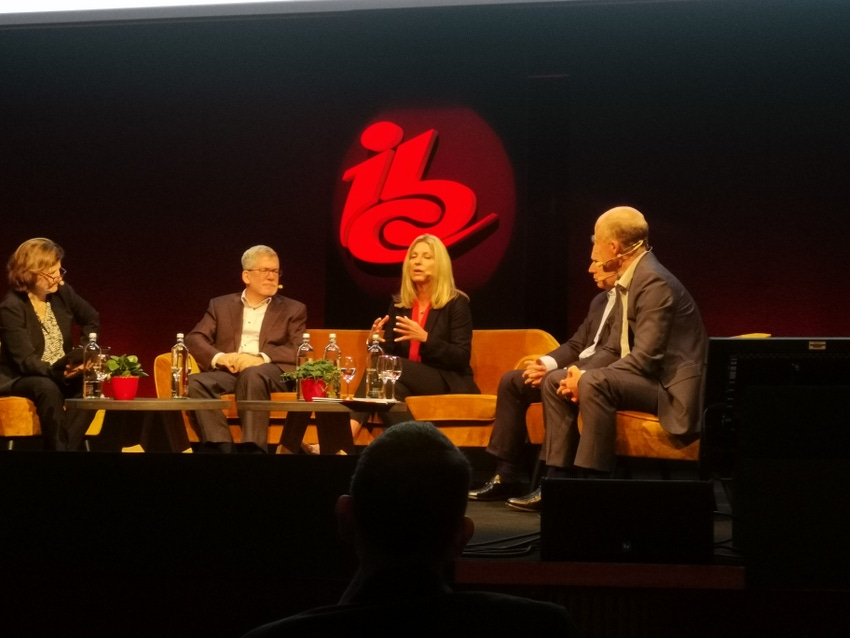This might sound like a very bold and short-sighted statement, but thanks to the development of IP-based standards, traditional broadcasters might just be able to survive in the digital economy.
September 16, 2019

This might sound like a very bold and short-sighted statement, but thanks to the development of IP-based standards, traditional broadcasters might just be able to survive in the digital economy.
This is of course not a statement which suggests business is as usual, there are major restructures and realignments which need to occur to future-proof the business, but linear TV and traditional broadcasters can survive in the cut-throat world of tomorrow.
The change which is being forced onto the world is HbbTV and ATSC 3.0, two new standards for the traditional broadcasters to get behind which offer the opportunity to create the experiences consumers desire and the business model which advertisers demand.
HbbTV, Hybrid Broadcast Broadband TV, and ATSC 3.0 are both standards which aim to take the broadcasting industry into the digital world. Although these standards are not necessarily harmonised, the IP approach effectively forces manufacturers and broadcasters into an era of on-demand content, interactive experiences and hyper-targeted advertising.
Over the last few years, many in the TMT world have been quick to write the obituaries for linear programming, but this is not an area which should be written off so abruptly. There is still a niche for the idea of linear TV, and if executed competently, there will be an audience of Generation Z sitting on the sofa next to the Baby Boomers.
Oliver Botti of the Fincons Group, pointed to two areas where linear TV currently, and will continue to, thrive. Firstly, live sports, and secondly, reality TV programming such as Celebrity Big Brother. With both of these standards, new content, experiences and advertising business models can be enabled to ensure continued relevance.
For sports, additional content can be offered to the consumer alongside the action to offer the viewer more control of their experience. This is something which is becoming increasingly common in the OTT world, though it is yet to genuinely penetrate traditional broadcasting in any meaningful way. The second example Botti highlighted is a very interesting one.
The concept of Celebrity Big Brother is not new to most. Dozens of cameras in a closed environment, following around the lives of prima donnas where at least one will probably make some sort of racist gaff at some point. However, with the new standards, Botti highlighted users can choose which camera is live on their own TV, creating a personalised content experience.
It does sound very creepy, but this is the sort of thing which is likely to appeal to some audiences…
Both of these examples are live content. For some, this experience can not be replicated in an on-demand environment, driving the continued relevance for linear TV. It is a niche, but one which will drive the relevance of traditional broadcasters and the relevance of linear programming for years to come.
Vincent Grivet, Chairman of the HbbTV Association, also highlighted the standards also allow for personalised advertising. This is just as, or perhaps more, important to the survival of traditional broadcasters as without the advertising dollars these businesses will not survive. Advertisers know what they want nowadays mainly because Silicon Valley can offer it. If hyper-targeted advertising is not an option, advertisers will not part with their valuable budgets.
What is worth noting, is that both of these standards rely on the TV manufacturers creating products which allow for success to continue. This is where an issue might arise; currently there is no global harmonisation.
HbbTV has been adopted in Europe, while ATSC 3.0 has been championed in the US and South Korea. China is doing what China does and going down its own separate path, creating a notable amount of fragmentation. This might be a challenge.
Richard Friedel, Executive VP of Technology & Broadcast Strategy of 21st Century Fox, told us that as an engineer he would like to see more harmonisation, but as a pragmatist, he doesn’t see it happening any time soon. All the standards are IP-based, therefore there will be a natural alignment as the industry evolves over the next couple of years, but this does not necessarily mean genuine harmonisation.
This presents a complication for the industry, but let’s not forget that this is a positive step in the right direction. Linear TV might not be attracting the headlines, but if you listen to the right people, it is certainly not dead.
About the Author(s)
You May Also Like








.png?width=300&auto=webp&quality=80&disable=upscale)


_1.jpg?width=300&auto=webp&quality=80&disable=upscale)


.png?width=800&auto=webp&quality=80&disable=upscale)